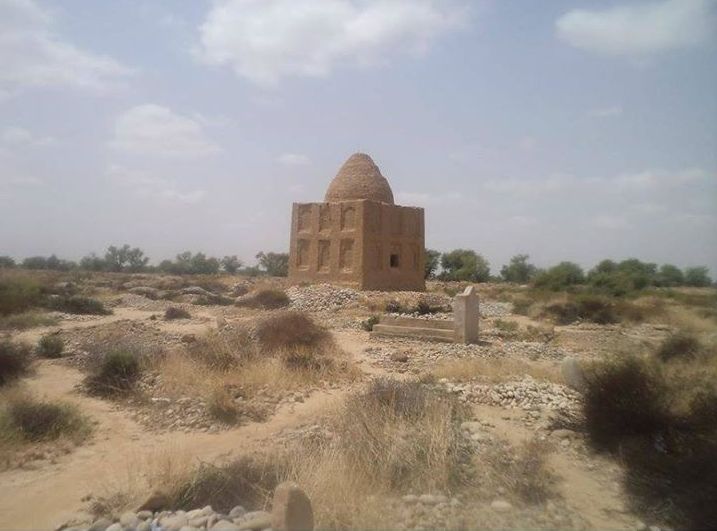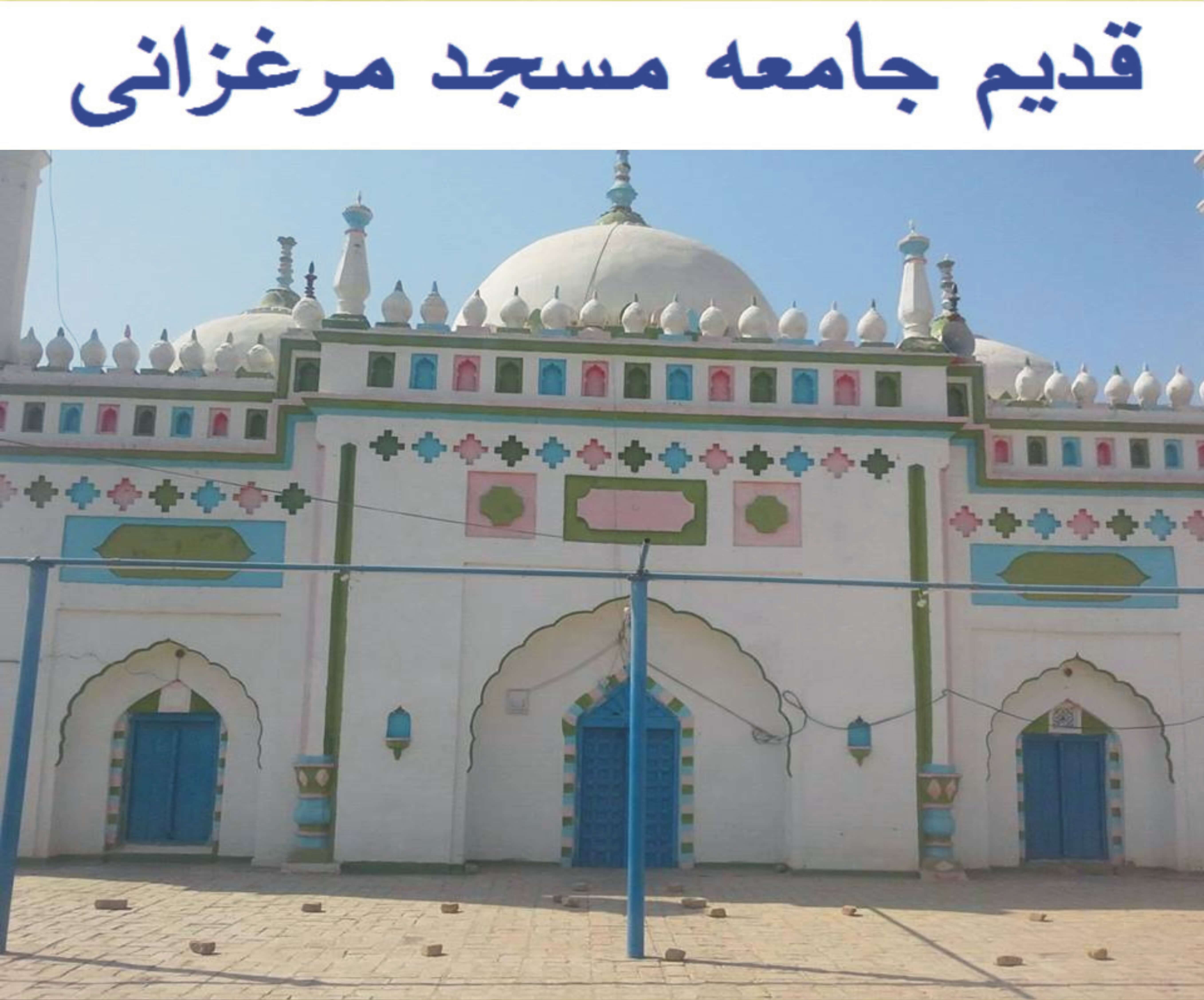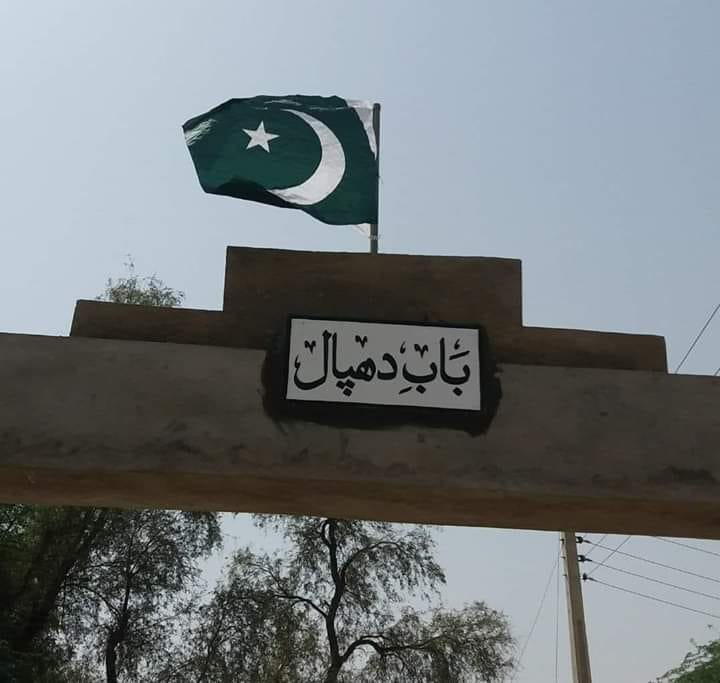|
Khajjak
The Khajjak is a village at a 8 kilometers distance from Sibi city of Balochistan, Pakistan. The whole of the Khajjak town is very rich particularly in wheat. The Khajjak tribe hold the means of irrigation by the Nari completely in their hands and their crops extent of cultivation were unequaled in any part of Kachhi District. Anglo Khajjak Battle 1841 The Khajjak Town is situated 8 Kilometers distance from Sibi city Balochistan province of Pakistan . This tract is generally uncultivated till within about 4 miles South of Kurak, thence as far North as the hills the area is very productive. The whole of the Khajjak circle of which the Fort of that name is the capital is very rich particularly in wheat. ThKhajjak Tribeas before stated held the means of irrigation by the Nari completely in their hands and crops extent of cultivation were unequaled in any part of Kachhi District. In January 1841 Brigadier Valiant's brigade consisting of two troops Horse Artillery, a nine pounder F ... [...More Info...] [...Related Items...] OR: [Wikipedia] [Google] [Baidu] |
Sibi
Sibi ( Sindhi: سيوي ur, ) is a city situated in the Balochistan province of Pakistan. The city is the headquarters of the district and tehsil of the same name. Etymology The origin of the town's name is attributed to Rani Sewi, a Hindu lady of the Sewa Dynasty who ruled Balochistan before the 7th century.The tribal Baluchistan by Syed Abdul Quddus page 49 History The history of the Sibi region dates back to the 7th century at the earliest, when it was ruled by the Sewa dynasty. In the early 13th century, Sibi was a dependency of Multan under Nasiruddin Qabacha of the Ghurid Empire. The area was then variously subject to Multan or Sindh throughout much of its history. The Arghun dynasty of Kandahar invaded in the late 15th century and seized Sibi from the Samma dynasty of Sindh, but it was returned to Sindh during the Mughal period. Sibi was governed by the Kalhora dynasty during the early 18th century, which in turn paid tribute to the Afsharids after Nader Shah's invas ... [...More Info...] [...Related Items...] OR: [Wikipedia] [Google] [Baidu] |
Loralai District
Loralai District ( ur, ) is a district in the northeast of Balochistan province of Pakistan. Loralai town is the district headquarters. Demographics At the time of the 2017 census the district had a population of 244,446, of which 130,484 were males and 113,950 females. Rural population was 189,597 (77.56%) while the urban population was 54,849 (22.44%). The literacy rate was 42.42% - the male literacy rate was 56.99% while the female literacy rate was 25.46%. 1,201 people in the district were from religious minorities. At the time of the 2017 census, 93.29% of the population spoke Pashto, 1.68% Saraiki, 1.48% Balochi and 1.31% Punjabi as their first language. Education * University of Loralai According to the Pakistan District Education Rankings, district Loralai is ranked at number 97 out of the 141 ranked districts in Pakistan on the education score index. This index considers learning, gender parity and retention in the district. Literacy rate in 2014–15 of populati ... [...More Info...] [...Related Items...] OR: [Wikipedia] [Google] [Baidu] |
Kurak, Pakistan
Kurak is a village at a 4 kilometers distance from Sibi city of Balochistan, Pakistan. The Kurak Town is the head quarter of Panni Tribe and ancestral village of Nawab barozai. See also * Sibi District * Mehergarh * Sevi * Bibi Nani * khajjak * Dehpal * Marghazani Marghzani tribe is one of prominent tribes of Sibi and Musakhail. The tribe itself a tribe of Panni Pashtoons.The tribe as per their background must have spoken Pashto as those belonging to Musakhail do speak but those living in areas of Sibi spea ... References Populated places in Sibi District {{Balochistan-geo-stub ... [...More Info...] [...Related Items...] OR: [Wikipedia] [Google] [Baidu] |
Marghazani
Marghzani tribe is one of prominent tribes of Sibi and Musakhail. The tribe itself a tribe of Panni Pashtoons.The tribe as per their background must have spoken Pashto as those belonging to Musakhail do speak but those living in areas of Sibi speak Sindhi.Sibi is famous for its diversity where each ethnic group despite their background speaks Sindhi. there are several villages of Marghazani tribe in sibi while located and named according to their subgroups.For instance,Mullazai,Khankhails,Samezai,Bostanzai and many more. Marghazani Marghazani is a village at a 2 kilometers distance from Sibi city of Balochistan, Pakistan. References See also * Sibi District * Mehergarh * Sibi, Sevi * Bibi Nani * khajjak * Kurak, Pakistan, Kurak * Talli Populated places in Sibi District {{Balochistan-geo-stub ... [...More Info...] [...Related Items...] OR: [Wikipedia] [Google] [Baidu] |
Dehpal
Dehpal Kalan The Dehpal Kalan is a village near Sibi city of Balochistan Province of Pakistan The Dehpal Panni Tribe lived in the Ancient Sibi Fort for many years. Sibi Fort (Siwi Fort) The ancient Fort of Sibi is situated in Dehpal Kalan village near Sibi city. It finds place in popular Chach Nama where it is narrated that the King Chach defeated Sewas pushing out of this place and captured Sibi Fort.The Hindu rulers Sewas kept control for considerable time ultimately lost to king Chach in 550 A.D. The Arab General Muhammad bin Qasim say whole of this area. During the 11th century Sibi included in Ghaznavid Empire. Sibi Fort was fief of Jam Nizamuddin II of Sindh in 1488 A.D. the end of 15th century Sibi Fort was captured by Shah beg Arghun rebuilt the huge dome shaped architecture which still exists. In 1575 A.D. decaying of Arghun dynasty the Panni tribe taken control of Siwi Fort. The Government records evidence shows that Dehpal a Panni (Pashtun tribe) lived in Sibi ... [...More Info...] [...Related Items...] OR: [Wikipedia] [Google] [Baidu] |
Bibi Nani
Bibi Nani is an area in the road between the towns of Quetta and Sibi, in Balochistan, Pakistan, and is located at 29°41'60N 67°22'60E. The area name is most probably derived from a Sufi figure that was buried in its suburbs and is also the location of a Hindu shrine. The location is a major site for power connections that link areas of Balochistan with the water sources from the Sindh rivers. The area came into the news in January 2005 when a rocket attack took place on a checkpoint for the Pakistani army there. Reportedly, it was most probably carried out by Taliban The Taliban (; ps, طالبان, ṭālibān, lit=students or 'seekers'), which also refers to itself by its state (polity), state name, the Islamic Emirate of Afghanistan, is a Deobandi Islamic fundamentalism, Islamic fundamentalist, m ... fighters. References Populated places in Balochistan, Pakistan {{Baluchistan-geo-stub ... [...More Info...] [...Related Items...] OR: [Wikipedia] [Google] [Baidu] |
Mehergarh
Mehrgarh (; ur, ) is a Neolithic archaeological site (dated ) situated on the Kacchi Plain of Balochistan in Pakistan. It is located near the Bolan Pass, to the west of the Indus River and between the modern-day Pakistani cities of Quetta, Kalat and Sibi. The site was discovered in 1974 by an archaeological team led by the French archaeologists Jean-François Jarrige and his wife, Catherine Jarrige. Mehrgarh was excavated continuously between 1974 and 1986, and again from 1997 to 2000. Archaeological material has been found in six mounds, and about 32,000 artifacts have been collected from the site. The earliest settlement at Mehrgarh—located in the northeast corner of the site—was a small farming village dated between 7000 BCE and 5500 BCE. History Mehrgarh is one of the earliest known sites that shows evidence of farming and herding in South Asia.UNESCO World Heritage. 2004. ''Archaeological Site of Mehrgarh''Hirst, K. Kris. 2005"Mehrgarh". '' Guide to Archaeology'' ... [...More Info...] [...Related Items...] OR: [Wikipedia] [Google] [Baidu] |
Sibi District
Sibi (Urdu and bal, ) ( Sindhi: سيوي) is a district in the Balochistan province of Pakistan.Tehsils & Unions in the District of Sibi - Government of Pakistan The main mountain ranges are , Bambore and . The climatic and topography of Sibi District is quite varied compared to other districts of Balochistan. It is also known as the "Hot spot" of |
Balochistan
Balochistan ( ; bal, بلۏچستان; also romanised as Baluchistan and Baluchestan) is a historical region in Western and South Asia, located in the Iranian plateau's far southeast and bordering the Indian Plate and the Arabian Sea coastline. This arid region of desert and mountains is primarily populated by ethnic Baloch people. The Balochistan region is split between three countries: Iran, Afghanistan and Pakistan. Administratively it comprises the Pakistani province of Balochistan, the Iranian province of Sistan and Baluchestan, and the southern areas of Afghanistan, which include Nimruz, Helmand and Kandahar provinces. It borders the Pashtunistan region to the north, Sindh and Punjab to the east, and Iranian regions to the west. Its southern coastline, including the Makran Coast, is washed by the Arabian Sea, in particular by its western part, the Gulf of Oman. Etymology The name "Balochistan" is generally believed to derive from the name of the Baloch people. Since ... [...More Info...] [...Related Items...] OR: [Wikipedia] [Google] [Baidu] |
Kakar
The Kakar (Pashto: کاکړ) is a Gharghashti Pashtun tribe, based mostly in Northern Balochistan, Pakistan and Loy Kandahar in Afghanistan. Legendary origin Kakars are sons of Gharghashti who was the son of Qais Abdul Rashid. In Herat, the Kakar are locally called Kak. Historically, the tribe has been called Kak-kor (lit. family of Kak). The tomb of Kakar (or Kak) is in front of Herat central Jamia Masjid's gate. Some historians argue that Kakar was first buried in Kohistan, but Ghiyath al-Din Ghori brought the body to be re-buried in a mosque in the city of Herat. History Until the fifteenth century, Kakars along with Tajiks, Baloch and Farsiwans mainly inhabited the Qandahar region and because of the predominant position of Abdali and Ghilzai Pashtuns in Qandahar region during and around fourteenth century, Tajiks, Hazaras, Kakars and Baloch lost their previous possessions and were forced to pay tax or revenue to warlords from either Abdali or Ghilzai tribal divisions. In ... [...More Info...] [...Related Items...] OR: [Wikipedia] [Google] [Baidu] |
Bhag
Bhag ( ur, بھاگ) is a city located within Kachhi District of Balochistan Province of Pakistan. It is the largest city of the district and sits at an altitude of 90 meters (298 feet). Prior to 2013, Bhag Tehsil was located within Kachhi District before being split off to become part of Lehri District (along with Lehri Tehsil) within Sibi Division, which that district would later be absorbed into Sibi District in 2018. Also, Bolan and Kachhi are used interchangeable. The city comprises the majority of the Baloch and Jamot tribes, while a smaller population of Birahvis and Pashtun can also be found. The tribes consist of: * Pashtun tribes: Qazi, Raisani * Baloch tribes: Chhalgari, Rind, Mastoi, Mugheri, Lund, Babbar, Gola, Jatoi, Goya and Pahore. * Sindhi tribes:Attar, Hanbhi, Kalwar, Abro, Airy, Machhi, Sheikh, Bohar and Soomro. * Birahvi tribes: Lehri, Bangulzai, Babbar and Shahwani (which are the least populated). * Rajput tribes: Bhatti A large majority of resident ... [...More Info...] [...Related Items...] OR: [Wikipedia] [Google] [Baidu] |




